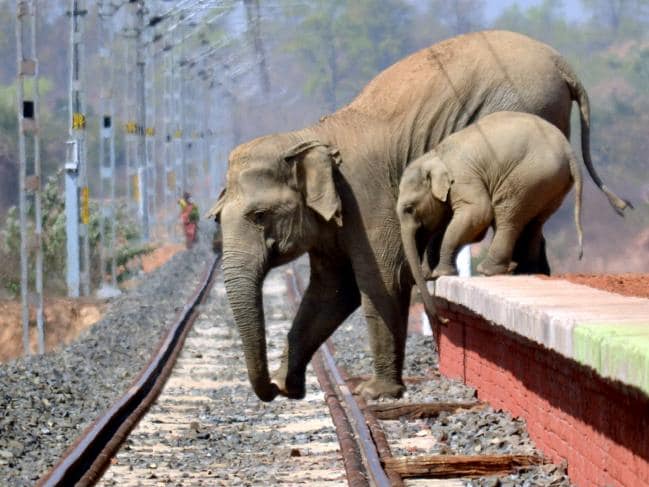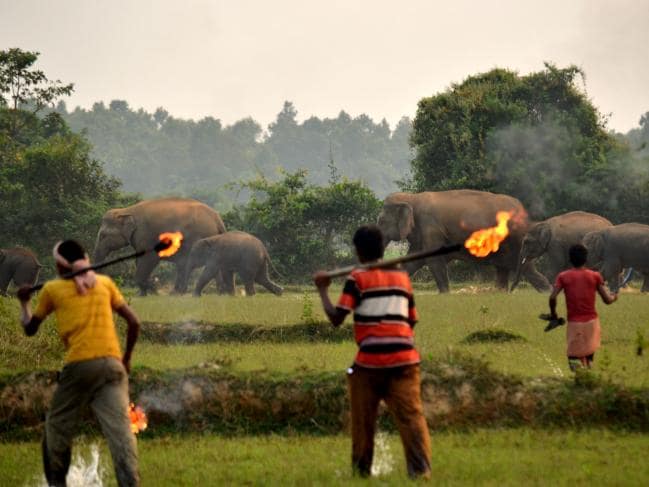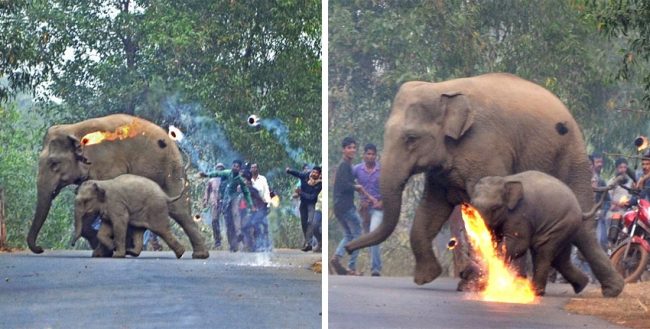You may have seen the harrowing image showing a confused family of elephants escaping a firefight. The distressing part? Those fireballs are being hurled at them by villagers.
The heartbreaking incident happened in the Indian village of Bishnupur, West Bengal. As reported by the Independent, a group of men started attacking the elephants because they had damaged crops on their farms.

For ages, India has revered elephants. However, due to the increase in deforestation, many of these animals leave their habitat searching for food and come into conflict with humans.
The conflict between elephants, an endangered species, and humans is ever-increasing as these wild animals find themselves trying to survive in less natural habitats.

And people are taking pictures of the wild elephants in such incidents to raise awareness.
This photo shows a mother elephant and her calf attempting to navigate the railway tracks constructed through their habitats.

These heartbreaking images were taken by Biplab Hazra, a photographer whose goal is to raise awareness about the state of elephants due to their endangered habitat.
Biplab Hazra told Caters News Agency:
"This happens because the villagers have to save their crops. There are many elephant corridors in human habitations. I'm trying to show this and spread my photos to increase public awareness on the matter."

According to Independent:
"The images highlight the extraordinary level of violence the endangered species face as they try to survive in smaller, more fragmented habitats. Herds of elephants can cause significant damage to crops, impacting people's livelihoods. Some farmers use flaming torches to frighten elephants away from inhabited areas."
Facts about the Indian Elephants
According to the World Wildlife Fund, Indian elephants feed on grasses (mostly), tree bark, roots, leaves, and small stems. They sometimes eat bananas, rice, and sugarcane.
They can feed for up to 19 hours a day and produce around 220 pounds of dung in the same amount of time.
Why Does This Matter?
Since Indian elephants can wander an average of 125 square miles daily, the dung they produce can help disperse germinating seeds.
However, humans are attacking the very animal that can play a 'huge' role in their crop production.
Another reason to preserve this species is that these elephants help in maintaining the forests' and grassland habitats' integrity.
But without reliable food sources or habitats, the species will always find its way to farms, settlements, plantations, or anywhere they can find food to survive.
So, the human-elephant conflict is evident, and it doesn't seem like it'll change. But, as Asian Species Expert, Dr. Barney Long, says:
"As South Asia's population explodes, elephants are getting squeezed into smaller areas leading to major conflicts, we need to champion solutions that help both elephants and people."
In an interview with The Sun, Dr. Liz Greengrass, head of conservation at the British charity Born Free, shared ways to make this possible.
"The future of the Asian elephant in India depends on their ability to use corridors between forest tracts. However, for this to be possible, we have to make sure that peoples' safety and livelihoods are secured within these corridors."



